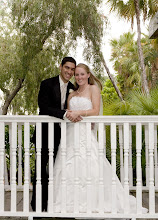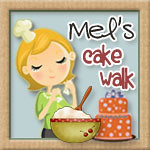White Modeling Chocolate
6 lb. good quality white chocolate couverture, chopped*
2 2/3 c. light corn syrup
Dark Modeling Chocolate
5 lb. good quality dark chocolate couverture, chopped*
2 2/3 c. light corn syrup
*Do not use chips as they have been formulated differently to retain the chip shape during shipping and storage. I used Ghirardeli chocoalte bars because that's what they sell at my grocery store.
6 lb. good quality white chocolate couverture, chopped*
2 2/3 c. light corn syrup
Dark Modeling Chocolate
5 lb. good quality dark chocolate couverture, chopped*
2 2/3 c. light corn syrup
*Do not use chips as they have been formulated differently to retain the chip shape during shipping and storage. I used Ghirardeli chocoalte bars because that's what they sell at my grocery store.
If you're like me, you don't have 6 lbs of chocolate lying around so smaller batches may be helpful:
Small-Batch White Modeling Chocolate
1 lb. good quality white chocolate couverture, chopped
7 Tbsp. light corn syrup
Small-Batch Dark Modeling Chocolate
1 lb. good quality dark chocolate couverture, chopped
10 Tbsp. light corn syrup
1 lb. good quality white chocolate couverture, chopped
7 Tbsp. light corn syrup
Small-Batch Dark Modeling Chocolate
1 lb. good quality dark chocolate couverture, chopped
10 Tbsp. light corn syrup
Gently melt the chocolate in a plastic bowl in the microwave, heating for only a few seconds at a time to avoid burning. Stir to melt remaining lumps.
Warm corn syrup so that it's approximately the same temperature as the chocolate. Pour the corn syrup into the chocolate (Use the high-tech finger test here: stick a finger in the corn syrup and then in the chocolate. If you don't notice a change in temperature between the two, you're ready to combine them). With a rubber spatula, stir quickly until the mixture is well-combined. It will thicken considerably as it cools.
Pour mixture onto 2 layers of plastic wrap and wrap it airtight. Let set 1 day at room temperature or a couple of hours in the refrigerator before using.
When you're ready to use the modeling chocolate, break off a workable amount and knead it in your hands. As the chocolate warms, it will be come malleable and soft. If you cannot knead the chocolate, heat it in the microwave for 5-10 seconds.
To color the chocolate, you can use many different types of color. If you'd like to use oil-based candy or chocolate coloring, add it to the melted chocolate before the corn syrup is added. If you use powdered color or gel/paste colors, you can knead it in after the chocolate has set up. Liquid colors are not recommended! I have added both paste and powdered colors to my chocolate. The powdered colors are more subtle and will require more powder to be added to reach a vivid shade. The chocolate picks up the colors from the pastes quickly so a little bit of color goes a long way. However, I have found that kneading color into chocolate is much more messy than kneading it into fondant or gum paste. The color does not seem to readily absorb into the chocolate so it gets all over my hands as I knead it. If you don't like your hands and fingernails to be dyed different colors, consider wearing food-safe gloves.
Working with modeling chocolate is also messier than working with gum paste or fondant. As you work the chocolate, it will get softer and stickier. The rate at which this occurs is dependent on the temperature of your hands. Luckily, I have rather cold hands so that gives me more time to work with my chocolate. If you notice the chocolate has become extremely soft and sticky, set it down and walk away. You can put it in the refrigerator if you're in a hurry.
Most decorators use shortening, powdered sugar, cornstarch, or a combination of all of those to keep fondant and gum paste from sticking to their hands. With chocolate, the best thing to use is water! When water touches chocolate, it seizes so that's the perfect thing to use when you don't want the chocolate sticking to your hands!
One of my favorite things about working with modeling chocolate is that you can blend all seams! When I make figures, I first shape the body & legs, then add shoes/feet, arms, the head, etc. Because everything is added in steps, you'd have lots of little seams if you were using fondant or gum paste. Sure, you can work these seams out, but that takes a lot of time (for me, at least). With modeling chocolate, just use the back of your dresden tool (definitely the #1 modeling chocolate tool) to blend the seams! It's so easy!
Another thing I love about modeling chocolate is its strength! If you've ever created a gum paste figure, you know you can't make the whole body at one time. The figure sags under all that weight. In the past, I have had to make the legs and let them dry, then add the torso and let it dry, and then add the head! That's a lot of waiting, and I just don't have the time! Modeling chocolate will set up hard in a matter of a few minutes so you can continue building. In fact, by the time you've cleaned your seams and perfected the body form, it's firm enough for you to add other details like arms, hands, etc. And, there are no internal supports required for small figures! No need to stick toothpicks or dowels down the middle of the body to hold it up - the chocolate can stand on its on. Of course, if I were doing a large figure, I would definitely use a strong support system.
Your chocolate figures will be stable for weeks, months, and perhaps even years if stored properly. Mike McCarey recommends wrapping the chocolate in plastic wrap, then putting it in a zip-top bag, and storing it in the refrigerator. The chocolate can become weakened with moisture in the air so this is particularly important if you live in a humid environment. Having said that, I live in Florida. I made this chocolate rat 1 week before the cake was due and it sat on the countertop all week with no problem. For longer storage, I definitely would have taken the precautions Mike reccommends.
So what else can you do with modeling chocolate besides figures? Oh, where do I begin?! Here are some fun things Mike showed us in his ICES 2009 demo:

Ok, let's take this piece by piece: On the bottom right is an example of marbelizing that you can do with modeling chocolate. It works the same as fondant or gum paste - and isn't it pretty? On the top right is a piece Mike embossed with a hyroglyphics pattern (pattern is seen on the bottom left) and then painted with brown food coloring. The coloring seeps into the lines of the pattern and you can leave it like it is, or gently wipe away the brown on top of the pattern - either way is impressive! This would also be fabulous for a brick design! On the top of the picture is a green piece of scrapbooking paper that looks like reptile skin. Mike gently pressed this into the white modeling chocolate on the top of the picture. I know it's hard to see, but trust me that it looked really nice! The last 2 pieces to talk about are the blue and green thing with purple dots and the white thing with green leaves. On both of those, Mike cut pieces of colored modeling chocolate and laid them on top of the sheet of rolled-out modeling chocolate. Then, he rolled them together. The pieces laying on top seemlessly press into the rolled-out sheet and you can't even tell that they were 2 pieces to begin with!
 This is a dragon Mike made out of modeling chocolate. Notice the water splashes (also modeling chocolate) coming up around the dragon body. Modeling chocolate stands upright immediately! No need to support it with tissue paper or other strange objects like we're used to doing with fondant and gum paste! The bottom blue border is a collar that sits about 1 inch away from the base of the cake. Yes, it's standing upright all by iteslf. What you can't see is that there is a 1-inch strip of modeling chocolate laying around the base of the cake that this collar is attached to.
This is a dragon Mike made out of modeling chocolate. Notice the water splashes (also modeling chocolate) coming up around the dragon body. Modeling chocolate stands upright immediately! No need to support it with tissue paper or other strange objects like we're used to doing with fondant and gum paste! The bottom blue border is a collar that sits about 1 inch away from the base of the cake. Yes, it's standing upright all by iteslf. What you can't see is that there is a 1-inch strip of modeling chocolate laying around the base of the cake that this collar is attached to.Many of us are accustomed to putting fondant ribbons around the base of a cake tier. We roll the fondant to an even thickness, trim the ribbon so that it is of even width all the way down, and then gently attach it to the cake. More often the not, the ribbon stretches (and changes shape) when we try to transfer it to the cake. What a pain! Modeling chocoolate will solve that! Just roll the modeling chocolate and thin it like before. However, when you life the modeling chocolate, it will not stretch! Just dab a little water on the back of the ribbon, and it will stick to the cake with no problem!
So, as you can see, modeling chocolate is my new love. I'm thrilled to find a medium with so much versatility! I hope you try it out for yourself - after all, isn't that the best way to learn something new?!















25 comments:
I'm tired after just reading that! I know, I know, it's "easy." I'll stick with Photoshop. It looks awesome, though! And I loved the rat you made. The mohawk was an especially nice touch.
At last! someone else who loves modelling chocolate. thanks for all the tips. i am in the UK and i find that most people just use white or dark chocolate to cover cakes and make roses and ruffles or use cigarillos to cover cakes. I have always wanted to be more adventurous with MC but information is not readily available online or even books so i hae had to do a lot of (fun) experimenting. your articles are a godsend and very encouraging and exciting. please keep the tips coming and if there is any book or websites that you think are helpful please get in touch at exoticfantastic@ymail.com
thanks again and happy new year!
Eme
If i have multiple small objects to stick to a cake....say rocks that I have made from modeling chocolate what is the best way to do that? I have to build a cave with small rocks...thanks for your help!
You can use many different things to attach your modeling chocolate decorations: gum glue (a little gum paste dissolved in a small amount of water), clear vanilla/alcohol, melted chocolate, etc.
My daughter will be 14 & loves to makes different figures out of clay. She is going to decorate her own birthday cake this year using modeling chocolate. There is really good information, tips & ideas here! Is there anything she should keep in mind being a beginner?
Thanks for all the useful info! I've been doing cakes for 15 years and am tired of all the headaches associated with gumpaste and modelling paste figurines. I am making Tinkerbell and my Little Pony figurines to put around a castle cake for my daughter's 5th birthday. I was dreading the whole thing but now I am looking forward to it. I thought about trying to make the figures out of marzipan which would give a nice fleshy appearance for Tink and is easier to model than gumpaste but I think I'm just going to do all the figures out of modelling choc. The ponies will hold up better with the mod. choc. I don't know why I haven't thought of it really before and then I started pondering it and came across your site. Thanks again for the info! I think I can tell I'm going to fall in love with mod. choc!!!
I made the modeling chocolate and I began to mold it and within 5 minutes it was breaking into pieces and it wouldnt hold shape. I used Wiltons gel food coloring and I am not sure if thats what made it fall apart. Any suggestions?
Thanku for the info! U r wonderful to take the time to help out :)
Hello sugar!Oh my,what a treasure this is!It's the first time I'm modeling chocolate, so I really find your tips usefull, and I don't feel so scared about it anymore;)
Thank you so much, and please keep up the good work!
:)
I cannot tell you how much I have appreciated you sharing this information. I have just made some and it was so easy to use, it saved me so much time and aggravation. Bless you! I do have one question though, how can you make a white colour with this? Once again thank you for you sharing of knowledge.
To make white modeling chocolate, you have to start with white chocolate. :)
I tried the modeling chocolate and guess I screwed up somewhere cause it didn't even come out right and it was still hard that I couldn't even work with it. Any ideas would help out alot since this was the first time making this for me.
thank ya all.
Don't give up! Sometimes a recipe doesn't work out the first time you try it - it happens to the best of us. My suggestions to you would be to try the recipe one more time Or try another recipe! For example, you can also make modeling chocolate with Candy Melts. Just do a simple Google search and I'm sure you'll find some Candy Melt-based recipes.
In fact, it is not uncommon for the modeling chocolate to be very hard. You have to warm it up a bit before you can work with it. Put a small amount in plastic wrap and carry it around in your pocket for a while or just hold it between your hands. Your body temperature will warm it slightly but it will still be difficult to knead at first.
Hello!
Thanks for this great information! I made the modeling chocolate for the first time and started making a figurine-- I love how easy it is to get rid of the seams! However, I am having a difficult time getting the chocolate to set quick enough. I'm finding that I still need all the same supports (plastic wrap, foil, cotton balls, etc) as I did with gumpaste or fondant. I found that sticking the figurine in the freezer for a few minutes helps, however, the modeling chocolate begins to sweat as it comes back to room temp (is that normal?) and then once it's back to room temp, it begins to droop again. Seems like I can't get the chocolate to set and harden. Any suggestions or ideas on where I went wrong?
Thanks in advance for your help!
Finally someone who can answer my questions! Thank you so much for this site. Here is my problem...Similiar to the above statement, I also had a hard time keeping it stiff. it became too sticky to work with. What could I do to the rest of my batch, should I melt more chocolate and remix it into the batch, or should I just start over? As I see in your recipe I am positive I used too much corn syrup, (1c corn syrup to 1lb chocolate). Please help!
Great Tips Thanks! What about 'painting' white MC? What to use? If one makes figures from white mc such as a penguine, can one paint directly the black body, the white front and yellow beak/feet? Standard gel pastes I use for fondant/gumaste don't work.
When using modeling chocolate to cover a cake do you need to dry frost it as you do when using fondant?
I am starting a new adventure into using modeling chocolate and of course i have probably bitten off more than i can chew, its a teddy bear picnic for my 2 year old, but i have a question i plan to cover the cake in red and white checked modeling chocolate. if i put a layer of buttercream underneath will it hold in place???
Hello!
Here in Italy we don't have corn syrup...May I use liquide glucose?
Thank you so much!
Oh, thank you! I am a "cake artist" here in the US. My workplace is now getting more and more orders using figures and the like (Thanks Duff, Buddy,etc) but we always got stuck using gum paste or fondant, what a pain.I am "branching out" with modeling choc and needed a little instruction and a good recipe (as I've tried many). Awesome, awesome stuff on this page! :)
I have made white modelng chocolate using your recipe and I have having a lot of trouble with it. Maybe I am not using the correct chocolate. I am using white chocolate used in candy making. When I melt the chocolate and then add the corn syrup all seams well. Then at about 45 seconds in the mixture gets lumpy and the oil from the chocolate separates. The chcolate never really sets up. It is perfect if I refigerate and work with right away. But as soon as it becomes room temp it sags and melts. I can't sculpt anything becaue it is just too soft. Any thoughts?
Hi I live in the caribbean its very difficult to get good quality white chocolate as well as an oil based colouring I have a soccer cake to do complete with soccer players and I was wondering if its possible to create them in regular semi sweet chocolate and then cover my figurines in a thin layer of fondant to give them more character with regards to their uniform. please help. be blessed.
Regarding the last few comments here, I'm sorry but I am no expert in Modeling Chocolate. I have taken 2 classes with the medium and posted here what I learned. So what you see is what I know. If you have technical difficulties with your recipe, I would suggest trying a new recipe or contacting Keith Ryder or Mike McCarey to see if they can help.
If your MC gets soft while you're working with it, I understand that is a common problem. Put the MC down for a while and come back to it after it's had time to sit. If your hands are naturally warmer than others', try wearing some food handling gloves while you work with the MC.
will the modeling chocolate decorations on a cake become ruined if stored on the cake in the refridgerator?
if it doesn't become ruined, but hard, how long does it take to thaw out?
I found chocolate with cocoa butter in the ingredient list will not set well and lumps. I hope this helps.
Post a Comment